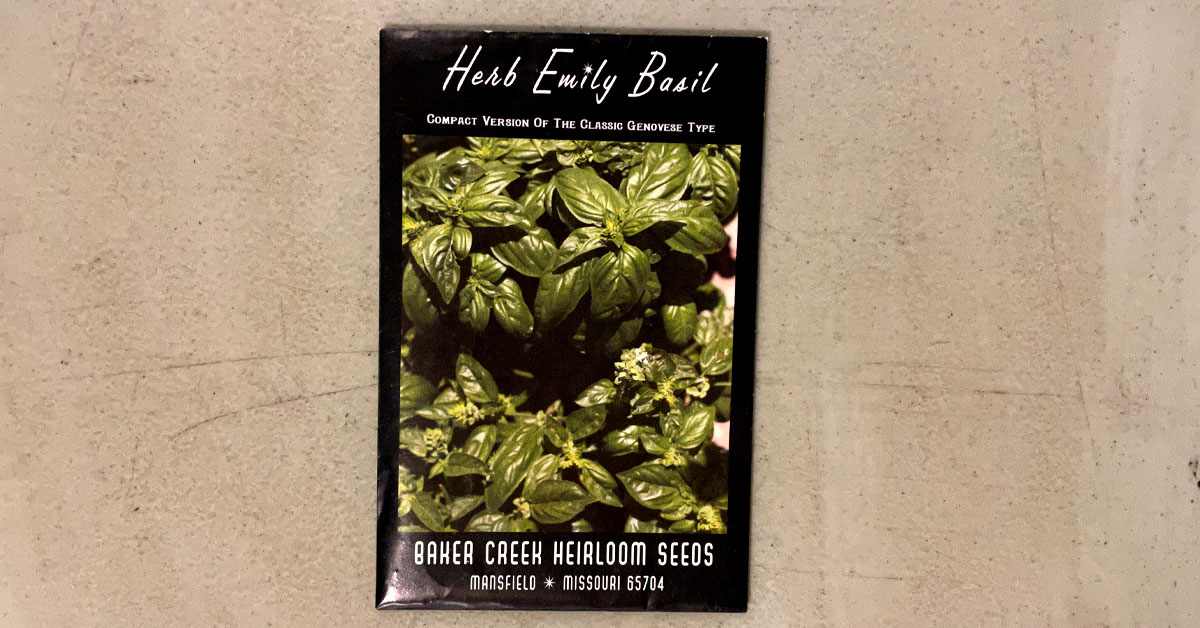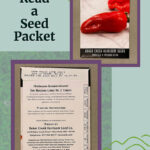This post may contain affiliate links. When you purchase through links on my site, I may earn a commission at no cost to you. See my Privacy Policy for details.
Many seed packets can contain a lot of information, while others contain very little. Learning how to read a seed packet can help you successfully grow your plant and plan your garden. Plus, knowing some of this information will help you gain a bit of confidence to try growing from seed. Let’s discuss the information you might find on various seed packets.
How to Read the Front of the Seed Packet
The front of the seed packet provides you with basic information about the plant you are growing. At the least, you will find the type of the seed and its variety name. Many packets you’d find in the store will also include a picture of the mature plant the seeds will produce. This gives you a great idea of what the crop will look like. Sometimes, you can even see the size of the plant, depending on what else is in the picture. The name of the company that packaged the seeds can usually be found on the front of the seed packet (seen at the bottom of the below photo.) If the seed is certified organic, you will also see something like “USDA Organic” displayed.
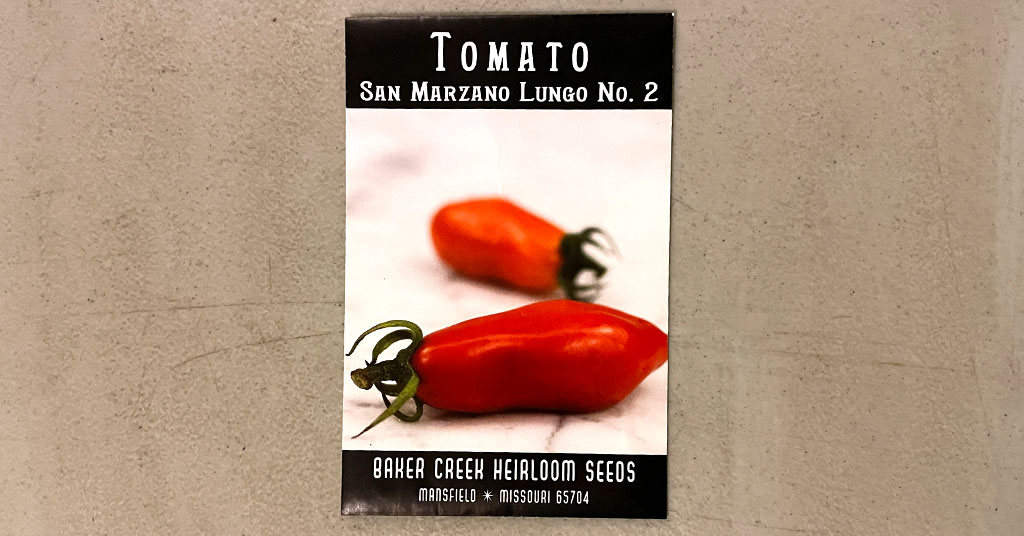
How to Read the Back of the Seed Packet
The back of the seed packet is where you will find the most information about your plant and how to plant it. It depends on the company on how much extra information they want to include. There’s no standard format or content. Some companies provide the history of where the seeds were developed, and some information on how it tastes. Others will also include the best way to prepare it.
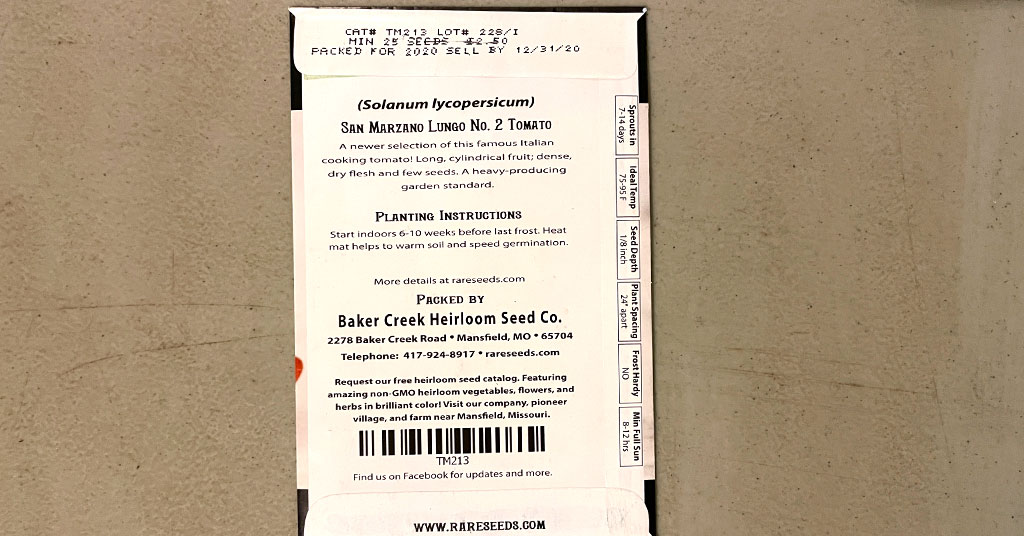
Depending on the company, the information may be titled differently. There’s a lot of variety of information that can be found on the back of a seed packet. Here is a rundown of the type of information that may be provided on the back of the seed packet, and how best to use the information for planting in your garden.
Days to Sprout/Days to Emerge
Days to Sprout/Emerge defines how long it will take the seed to germinate once it is sown into the soil. This date can help you not get as nervous if you have not seen your seeds start to sprout after a few days. Some seeds will take longer than others to get going.
Days to Maturity
This means around how long it will take for you to begin harvesting that crop. So if you plant a seed in the ground that would be day 1 and you should start checking your vegetables around the days to maturity mark to see if they are ready to start harvesting. For example, a radish seed packet shows 22 days to maturity. I will plant the seed on day one and on day 22 I will start checking the radishes to see if any are ready to harvest. This doesn’t mean you need to pick them all on that day but gives you a relative idea of when it will start producing crops you can harvest.
Packed For Date
The Packed For Date is the date that the seeds were packaged for. This is not an expiration date. Your seeds will not expire. You may get lower germination rates in future years but you should not throw out your seeds if they are past the packed-for date. This also gives you an idea when looking back at seed packets in the future and which year you bought them in.
Planting Depth/Sowing Depth
This provides information on how deep to plant your seeds. This depth is usually between 1/4″ and 1″ depending on the type of seed you are planting. Usually, if it is 1/4″, I barely cover the seed with soil to get them started.
Row Spacing
This one is very confusing on a seed packet. This information is more for commercial farmers who are planting their crops in long rows and need space in between those rows to allow for easy harvesting. If you are anything like me you are likely growing in a smaller garden plot, raised bed, or even in containers. I tend to ignore this information on the seed packet and look at the plant spacing number instead.
Plant Spacing/Thin To
This number provides the best spacing in between your plants to allow for ideal growth conditions. In my raised beds, I use this number to decide the space between each seed when planting. For example, for peas, it says the final spacing should be 2 inches. So I would calculate my spacing by putting a seed in the center and then go 2 inches up, 2 inches down, 2 inches left, and 2 inches right for the next seeds. You can then repeat this process for each seed you plant depending on how many you would like to plant.
Light
The seed companies will usually provide you with information on how much sun the plants like. You will see things like Full Sun or Shade. This will give you an idea of the amount of light the plant needs for its ideal growing conditions.
Germination Rate
Some seed companies will provide the germination rate of the seeds in the package. They will provide a percentage of seeds that are viable based on their testing. They calculate the germination rate by dividing the total number of seeds that germinated by the total number of seeds they planted and multiplying that times 100 to get the percentage. For example, if you had 1 seed germinate out of 10 seeds planted you would have a 10% germination rate. I have seen some companies overpack their seed packets if there is low germination of a certain type of seed you ordered.
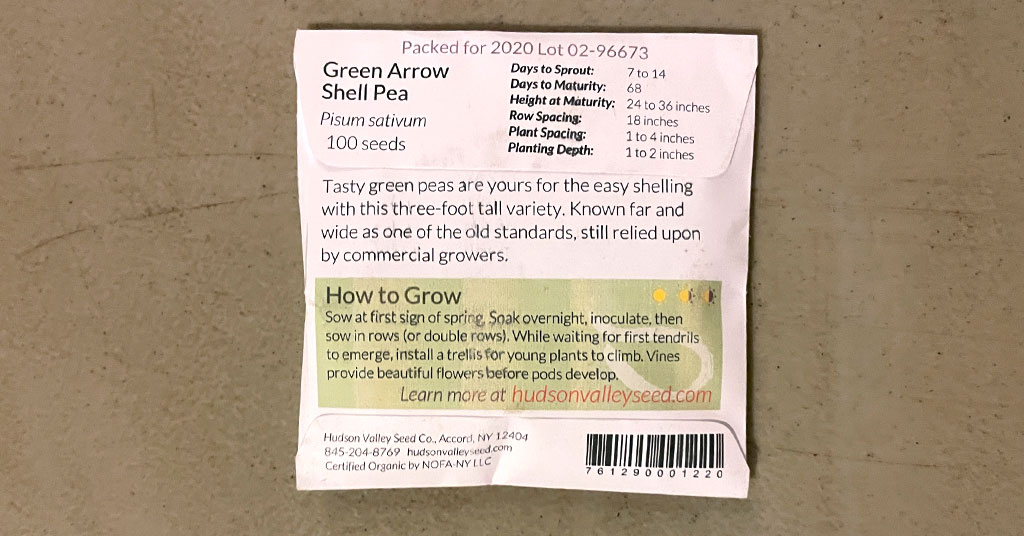
From Reading to Seeding
Now you know how to read the variety of information on a seed packet. You should have all the tools you need to understand the information provided on your seed packets. Your next step may be directly sowing seeds in the garden or starting your seeds indoors and then planting them as transplants in your garden.
I hope you are going to enjoy using seeds as much as I do because there are so many additional options when you get to choose your seeds.

